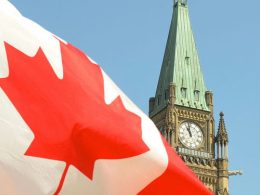Interest Rates: Lower for Longer It Is
by Brad McMillan Commonwealth Financial Network
Janet Yellen made it very clear yesterday that, as far as she’s concerned, the trajectory for interest rates will be lower for longer. In a speech to the Economic Club of New York, Yellen said that she thinks the risks in the global economy justify continued low rates here in the U.S.
Whether you agree with it or not, this seems to be the policy stance of the Federal Reserve. Even at the Fed, however, many aren't in agreement. In the past week, several Fed members have expressed a more hawkish view, suggesting that interest rates may indeed rise faster. Nonetheless, from the chair’s viewpoint, lower for longer it is.
A policy with no foreseeable end
In the short term (yesterday and this morning), markets have been cheering. The prospect of continued low rates is usually seen as good for stocks, and that is playing out. Longer-term, though, Yellen’s stance raises deeper questions.
Let’s start with the Fed’s credibility. By statute, the Fed is supposed to be looking at inflation and employment, and nothing else. In practice, of course, everything else matters, but these have been the two controlling factors. By explicitly linking Fed policy to the slowdown in China and the collapse in the price of oil—areas unarguably beyond the Fed’s control—Yellen has taken a new, and potentially unwise, step outside the historical bounds of Fedspeak.
Meanwhile, the actual data, pertaining to areas on which the Fed is supposed to be focusing, is rapidly moving to levels that will demand action. To make this divergence even worse, the Fed has spent the past few years insisting that it will be data dependent, making policy as the underlying conditions change. In fact, the Fed has repeatedly moved the goalposts. First, it decided that the risk of low inflation required continuing stimulus, even as unemployment dropped below the Fed's own publicly declared trigger levels. Now, it has determined that foreign risks demand continued stimulus, even as inflation moves above its stated trigger levels.
Clearly, in Yellen’s eyes, the Fed will keep rates low until global risks recede. The problem is that, unlike with unemployment and inflation, there's no policy metric for “global risks.” This is a policy with no real expiration date, as we can certainly expect that global risks will continue. There is no data to depend on here.
This might not end well
This policy can only last while there is still some sign of weakness in the primary indicators. At some point, improvements in employment and increases in inflation will force enough voting members of the Fed to raise rates, despite the chair's stance. With employment now at healthy levels and inflation accelerating upward, that time is rapidly approaching—as comments from other members of the Fed in the past week have indicated.
Right now, the effect of Yellen’s policy will be to delay Fed action until there's no question whatever that inflation has taken hold. At that point, the required rate increases and other policy tightening will have to be much more severe than they otherwise would have been. In many ways, this isn't a surprise; based on past Fed behavior, it’s pretty typical for it to react strongly later rather than gently earlier.
Unfortunately, what happens next won't be a surprise either. Unlike gentle rate increases that the economy can adapt to, sudden increases have a tendency to slam on the brakes, with all of the collateral risks and damage that can bring. That kind of rapid policy tightening in the next year or two is just what Yellen’s current policy is likely to cause. And it’s just the kind of policy that has, in the past, created a recession—which is the last thing we need.
Commonwealth Financial Network is the nation’s largest privately held independent broker/dealer-RIA. This post originally appeared on Commonwealth Independent Advisor, the firm’s corporate blog.
Copyright © Commonwealth Financial Network















